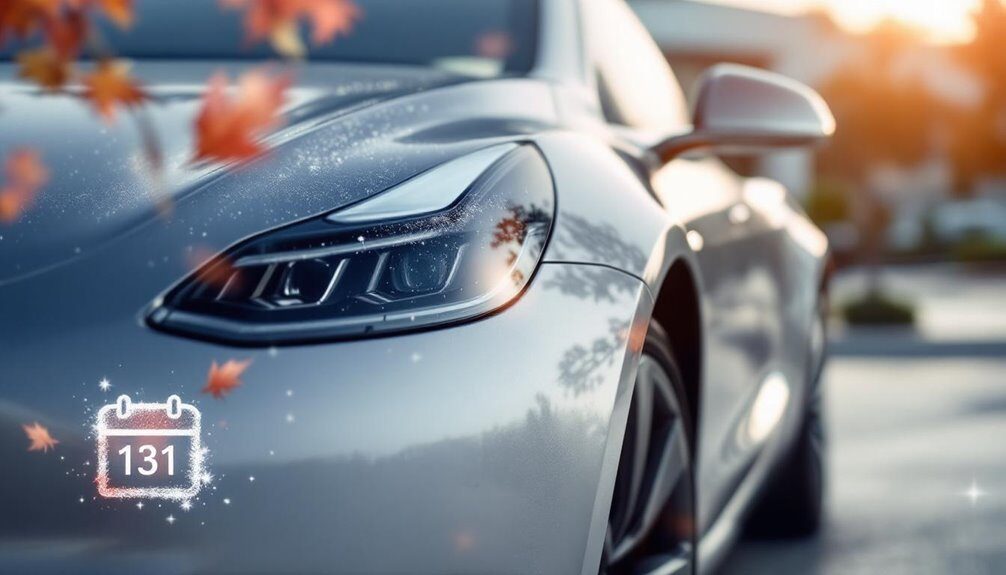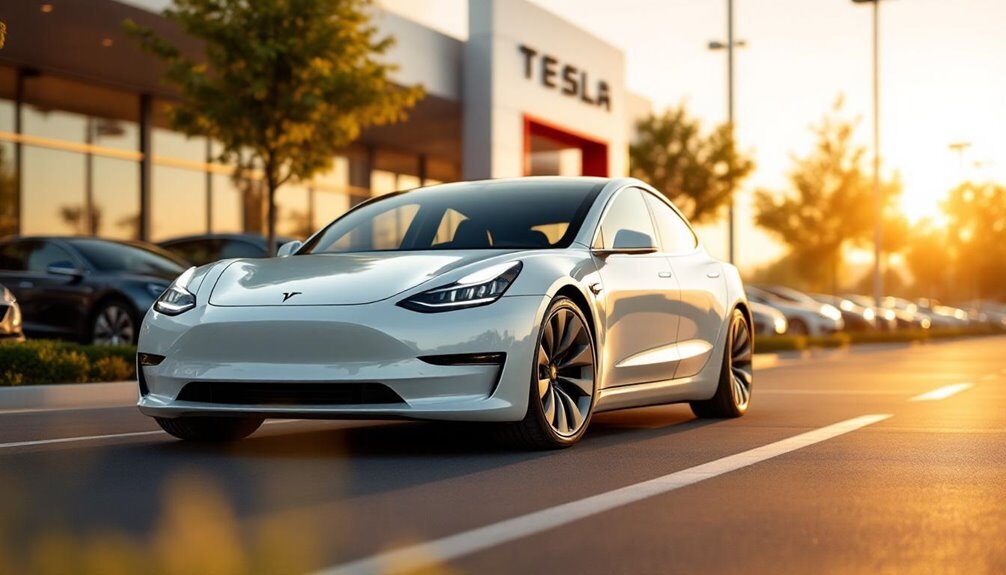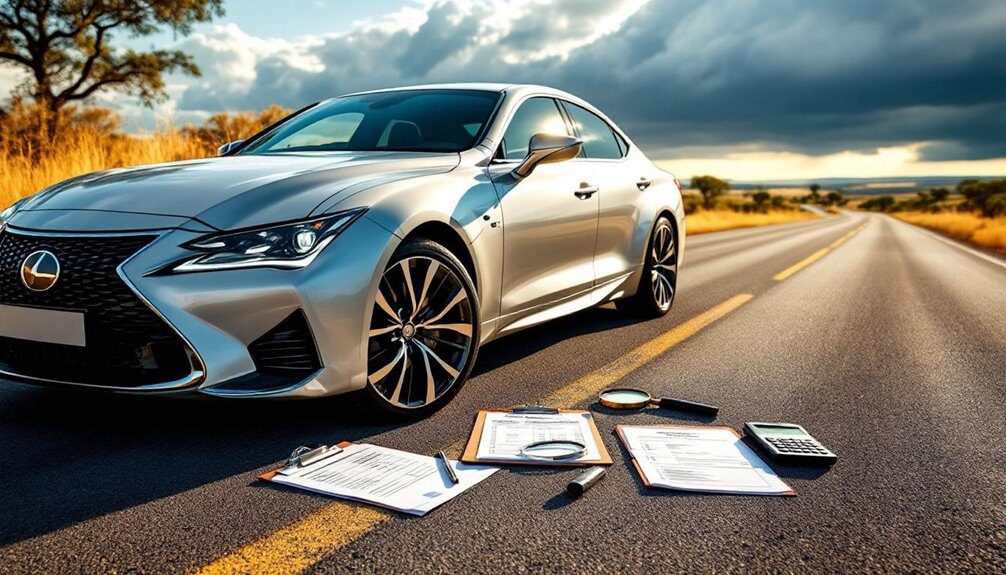You’re not getting a bargain on maintenance if you’re not driving a Suzuki Swift, Toyota Vitz, Renault Kwid, Hyundai Grand i10, or Suzuki S-Presso—these five models are South Africa’s cheapest cars to maintain in 2026. Service costs range from R770 annually to R3,920 for major services. Spare parts? Affordable. Parts availability? Solid. You’ll find everything from spark plugs at R93 to shock absorbers under R1,650, all accessible through widespread dealer networks and aftermarket suppliers. But there’s way more to unpack here.
Suzuki Swift: The Most Affordable Option on the Market
When you’re hunting for a car that won’t drain your wallet at the service bay, the Suzuki Swift keeps its costs down—way down. Parts like inner CV joints run about R837, front rack ends hover around R361. A mid-major 45,000 km service? Roughly R3,920 all-in. Brake disc replacements land between R571 and R1,500. Shock absorbers range from R355 to over R1,650 per unit.
The Swift’s straightforward engine design means fewer complex repairs. You’re not wrestling with exotic components or paying dealership rates that’ll make you wince. Timing chain replacements sit at R784–R999. Autobahn Motors offers extensive inventory of genuine OEM parts and aftermarket components, ensuring you can source quality replacements quickly. Modern Auto Parts offers fast delivery nationwide as a registered Midas franchise, ensuring you can source components quickly without extended downtime. Experienced technicians at professional service centres can handle swift maintenance efficiently. Yeah, labour costs still sting—average dealer rates hit R825 hourly—but overall? The Swift’s reputation for affordable maintenance is legit. Parts availability from both OEM and aftermarket suppliers keeps waiting times short. Obtaining multiple quotes from different dealers before authorising work can reveal significant price variations and help you avoid inflated service costs.
Toyota Vitz: Reliability Meets Low Maintenance Costs
You’re looking at a car that’ll actually stick around—the Toyota Vitz isn’t just cheap to buy, it’s built to last without draining your wallet on repairs.
Parts? They’re everywhere and won’t cost you an arm and a leg, thanks to Vitz and older Yaris models flooding the used market, plus mechanics know these cars inside out.
Between the rock-solid reliability and maintenance costs running R1,010 to R3,900 per service, you’re basically paying peanuts to keep this thing running for years. To maximise your savings, consider securing a service plan that bundles scheduled maintenance into predictable monthly payments, making it easier to budget for oil changes, filter replacements, and labour costs without surprise bills. Regular maintenance with comprehensive inspections helps identify potential issues early, preventing costly repairs down the line. Autobahn Motors in Paulpietersburg and eDumbe provides comprehensive maintenance and repair services to keep your Vitz in peak condition.
Durability and Long-Term Value
Because Toyota built the Vitz to actually last—and didn’t cut corners in the process—you’re looking at a hatchback that doesn’t fall apart after 50,000km like some competitors do.
The engineering’s solid. The build quality? Exceptional. You get consistent performance over time, even when you’re driving it hard daily.
Here’s what that means for your wallet:
- Slow depreciation rates keep resale value strong, so you’re not losing money hand over fist when you eventually sell
- High demand for used models means buyers actually want them, protecting your investment longer
- Reliability plus low running costs combine to make the Vitz genuinely affordable to own long-term
Dealers like Autobahn Auto in Paulpietersburg offer competitive financing options through major partners to make purchasing reliable used vehicles more accessible. Regular routine maintenance and expert service oversight help preserve the Vitz’s exceptional durability over time.
That’s the real story. You’re not just buying cheap maintenance—you’re buying a vehicle that holds its ground financially. Toyota’s reputation isn’t hype. It’s earned.
Parts Availability and Affordability
All that durability and reliability doesn’t mean squat if you can’t actually get parts when you need ’em—or if they’ll drain your bank account.
Here’s the good news: Vitz parts are everywhere. Major dealerships like Freeway Toyota stock genuine components. Spark plugs run around R93. Oil filters? About R201. Even brake pads—typically pricey—stay competitive. Aftermarket suppliers like Gemini Parts offer OE-quality alternatives at discounted prices, so you’ve got options.
Routine maintenance won’t wreck your budget either. Service kits start from R995. Extended plans cover you up to 300,000 km. Availability of free delivery around major cities cuts acquisition costs further. For comprehensive brake service and maintenance, professional brake inspections and repairs keep your vehicle in optimal condition. For more comprehensive upkeep, skilled technicians performing inspections and repairs ensure your vehicle receives professional care that extends its lifespan.
Bottom line: keeping a Vitz running cheap isn’t fiction—it’s just smart ownership.
Renault Kwid: Budget-Conscious Ownership Without Compromise
Imagine this: you’re shopping for a car that won’t drain your wallet every time it needs servicing. The Renault Kwid delivers exactly that.
We’re talking about five years of maintenance costing roughly R4,085.84. Not bad, right?
Here’s what makes it work:
- Minor services every 15,000 km — oil, filters, fluid checks. Simple. Affordable.
- Major services at longer intervals — covers air conditioning, battery, brake lines, cooling system. Still reasonable.
- Average annual cost around R770–R960 — genuinely budget-friendly territory.
The Kwid’s service plan doesn’t mess around with hidden costs. You’ll know exactly what you’re paying before the wrench touches anything. For reliable servicing, facilities like Autobahn Motors provide comprehensive automotive care and maintenance to keep your vehicle in top condition.
After 50,000 km, sure, spark plugs and brakes need attention. But nothing shocking. Nothing that’ll make you cry.
For professional servicing and maintenance support, consider facilities offering comprehensive tyre services and expert auto care to ensure your vehicle stays roadworthy throughout its lifecycle.
Hyundai Grand i10: Modern Features at Minimal Cost
Major services run R2600 to R2800, covering oil filters, air filters, spark plugs, and labour.
Scheduled servicing every 15,000 km keeps costs predictable. You can lock in fixed monthly payments around R3000 through official service plans, which cover genuine Hyundai parts and qualified technicians—protecting your warranty through 150,000 km.
Yeah, Hyundai charges more for specific parts like sump plugs. But negotiate smartly, monitor oil levels, and you’ll dodge inflated bills.
This compact delivers modern convenience without maintenance sticker shock.
Suzuki S-Presso: Compact Design, Maximum Savings
If you’re hunting for a compact SUV that won’t bleed your wallet dry, the Suzuki S-Presso‘s got serious credentials. This lightweight machine delivers exceptional fuel economy—4.6 L/100km on manual, 4.4 L/100km on AMT. You’re looking at roughly R17,800 over five years in scheduled servicing. That’s genuinely cheap.
The Suzuki S-Presso delivers exceptional fuel economy and just R17,800 in five-year servicing costs—genuinely cheap.
Here’s why owners keep coming back:
- Minimalist interior keeps repairs simple and parts affordable—no unnecessary complexity jacking up costs
- Service intervals hit 10,000 km or annually, with that first service completely free
- Genuine parts stay budget-friendly thanks to Maruti Suzuki’s extensive local network
The compact design means less tyre wear, reduced brake stress, and straightforward maintenance. Standard stop-start technology squeezes every drop.
You’re not sacrificing practicality either—just unnecessary expense.
Comparing Annual Service and Parts Expenses
You’re probably wondering which car actually won’t drain your wallet every time you visit the service centre.
When you add up the annual costs—from routine maintenance to parts replacements—the differences between models become quite stark.
Let’s break down what you’re actually paying out each year and see which cars keep more money in your pocket.
Budget Service Cost Breakdown
Keeping your budget car running doesn’t have to drain your wallet—but the numbers might surprise you.
You’re looking at minor services ranging from R1,010 to R1,200 for entry-level cars. Major services? Around R2,200 to R2,400. That’s the baseline. But here’s where it gets tricky:
- Hidden costs pile up fast—tyres, alignments, and unexpected damage creep beyond base charges
- Mid-tier vehicles cost slightly more—your VW Polo or Toyota Corolla pushes minor services to R1,200, major ones close to R2,400
- Emergency cover matters—towing bundles like Pineapple (R689/month) protect you from breakdown surprises over 100 km away
The reality? Your actual annual spend depends on what breaks and when. Budget cars keep things straightforward, but surprises happen. Plan accordingly.
Annual Maintenance Expense Comparison
When you’re comparing what you’ll actually spend keeping a car running year after year, the differences between brands become apparent—quickly.
Toyota? You’re looking at minor servicing around R1,010 annually and major servicing hitting R2,200.
Ford Fiesta and Chevrolet Aveo hover in similar territory—affordable parts, straightforward engineering, reasonable labour costs.
Renault Kwid joins the budget club with modern efficiency that won’t drain your wallet.
Suzuki’s S-Presso and Celerio? Competitive servicing costs, efficient engines that don’t need constant attention.
Then there’s Volkswagen. Complex electronics, imported parts, specialised service centres. Yeah, that’s going to cost you more.
Bottom line: simpler design means fewer surprises. Toyota‘s durability reputation isn’t hype—it’s reflected in your annual bills.
Fuel Efficiency Rankings for 2026 Models
As fuel prices keep climbing in South Africa, 2026’s most efficient models are quietly reshaping what’s possible on a single tank. You’ve got legitimate options now that don’t demand a second mortgage.
The Suzuki Celerio automatic and Toyota Vitz automatic both hit 4.2L/100km—basically twins in the efficiency game. Want SUV vibes? The Suzuki S-Presso delivers 4.4L/100km without sacrificing practicality. But here’s where it gets interesting:
- Toyota Corolla Hybrid crushes it at 3.5L/100km to 3.9L/100km—the real deal for commuters serious about fuel costs
- Budget-friendly picks like the Renault Kwid and Proton Saga stay competitive around 4.7L/100km to 5.4L/100km
- Compact SUV options like Toyota Corolla Cross Hybrid achieve 4.3L/100km with actual space
Your fuel bill doesn’t have to hurt anymore.
Spare Parts Availability Across All Budget Brands
You’re buying a budget car—splendid. Now here’s the reality: spare parts availability isn’t created equal across brands.
Toyota and Suzuki? You’re golden. Their parts are everywhere, cheap, and fast. Local assembly means steady supply chains nationwide. Compare that to Renault, which relies heavily on imports and occasionally leaves you waiting. Tata‘s service points cluster in cities, leaving rural buyers stranded. Proton‘s even worse—barely any dealer centres exist, and ordering parts feels like an archaeological expedition.
The popularity game matters too. Everyone buys Toyotas and Suzukis, so parts move fast and prices stay competitive. Less popular brands? You’re paying more for logistics, waiting longer, and hoping distributors actually stock what you need. Bottom line: choose wisely, and your wallet stays happy.
Warranty and Service Network Coverage in South Africa
When you’re hunting for a car that won’t drain your wallet at the service centre, you’ve got solid options—Suzuki’s got dealer networks that actually reach beyond the major metros, Toyota’s warranty coverage is basically the gold standard everyone measures against, and Hyundai’s modern service centres are popping up everywhere, making maintenance appointments way less of a hassle.
You’re looking at brands where finding a mechanic isn’t like searching for a needle in a haystack, and where warranty claims don’t turn into month-long sagas. That convenience factor? It matters way more than people think when you’re tallying up real maintenance costs.
Suzuki’s Extensive Dealer Network
Over 110 Suzuki dealerships blanket Southern Africa, and that network’s actually grown to 117 locations by late 2025—a pretty solid expansion strategy if you’re hunting for service and parts support.
You get consistent, factory-authorised warranty repairs across the board. No sketchy independent shops guessing at your Suzuki’s quirks.
Here’s what matters:
- Trained technicians at every location keep turnaround times snappy and your maintenance costs predictable
- Parts availability improved dramatically thanks to Suzuki’s new Gauteng logistics hub launching mid-2026, cutting delays that’d otherwise bleed your wallet dry
- Competitive servicing rates stick around because dealer network scale keeps prices honest
Bottom line? That widespread dealer presence actually encourages regular maintenance. Prevents the expensive repairs that wreck your budget later.
Toyota’s Trusted Warranty Coverage
Toyota’s warranty setup in South Africa doesn’t mess about—it actually backs up what dealers promise. You get three years or 100,000 km on new vehicles, covering defects outright.
Want more? Extended warranties stretch to ten years with unlimited kilometres. Hybrid owners? They’re golden—same ten-year unlimited deal applies.
Here’s the catch: you’ve got to service at authorised Toyota dealers to keep that coverage valid. Skip more than one scheduled service in three years? Coverage tanks. The Toyota Genuine Pre-Owned Warranty extends protection beyond the initial three years, covering up to 220,000 km or two additional years.
Plus, you’re getting 24-hour roadside assistance during the warranty period. Flat tyre? Dead battery? Locked out? They’ve got you. That’s solid backing.
Hyundai’s Modern Service Centres
Hyundai’s service-centre sprawl across South Africa? It’s rather solid. You’ve got official dealerships and service centres in all the major provinces—Johannesburg, Cape Town, Durban, Pretoria, Port Elizabeth. They’re strategically positioned so you’re not stuck driving hours for a simple service.
Here’s what matters:
- Genuine parts and strict standards—every authorised centre uses authentic Hyundai components, meaning your warranty stays intact
- Mobile service options available in select regions, because sometimes convenience beats everything
- Online booking systems let you schedule maintenance without the phone tag nonsense
The parts availability? Generally high. Their distribution network gets components to remote centres fast. That’s genuinely helpful if you’re out in the sticks around eDumbe or similar areas.
Additional Budget-Friendly Models Worth Considering
When you’re hunting for a car that won’t drain your wallet, there’s actually more out there than you might think.
The Suzuki Swift? Affordable parts everywhere, solid reliability, genuinely fun to drive.
The Suzuki Swift delivers affordable parts, solid reliability, and genuine driving fun without breaking the bank.
The Toyota Vitz starts at R178,800—literally South Africa’s cheapest new car—and won’t nickel-and-dime you with repairs.
Then there’s the Renault Kwid: SUV vibes, budget pricing, maintenance costs hovering around R3,300–R4,300 annually.
The Hyundai Grand i10 splits the difference between affordability and actual features.
You get manual or automatic options, reasonable maintenance, accessible parts.
Finally, the Suzuki S-Presso crushes it on fuel efficiency at 4.9 L/100km.
Modern safety kit included.
These aren’t flashy picks.
But they’re smart ones.




